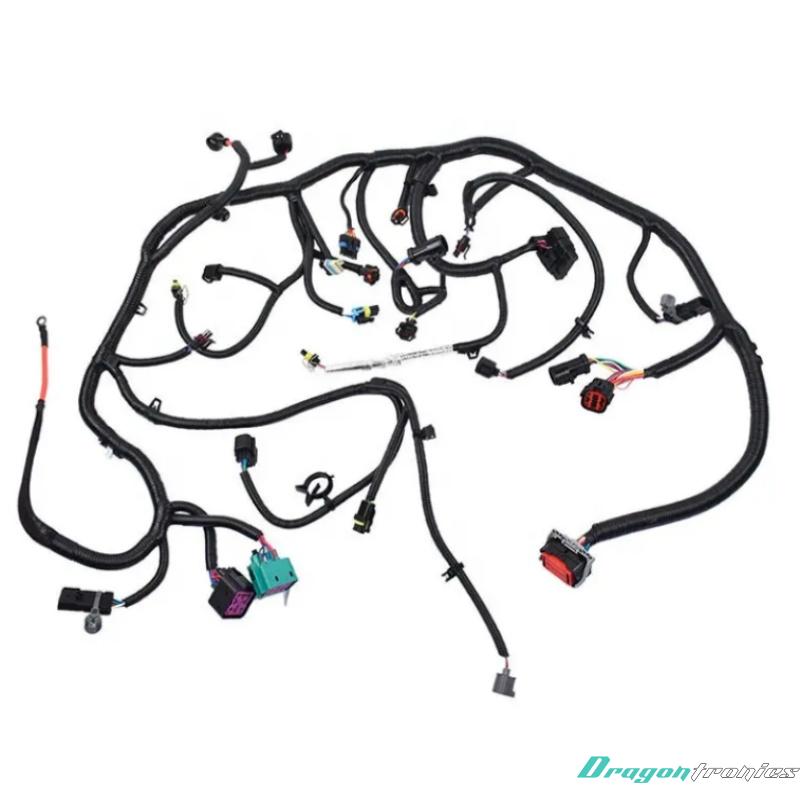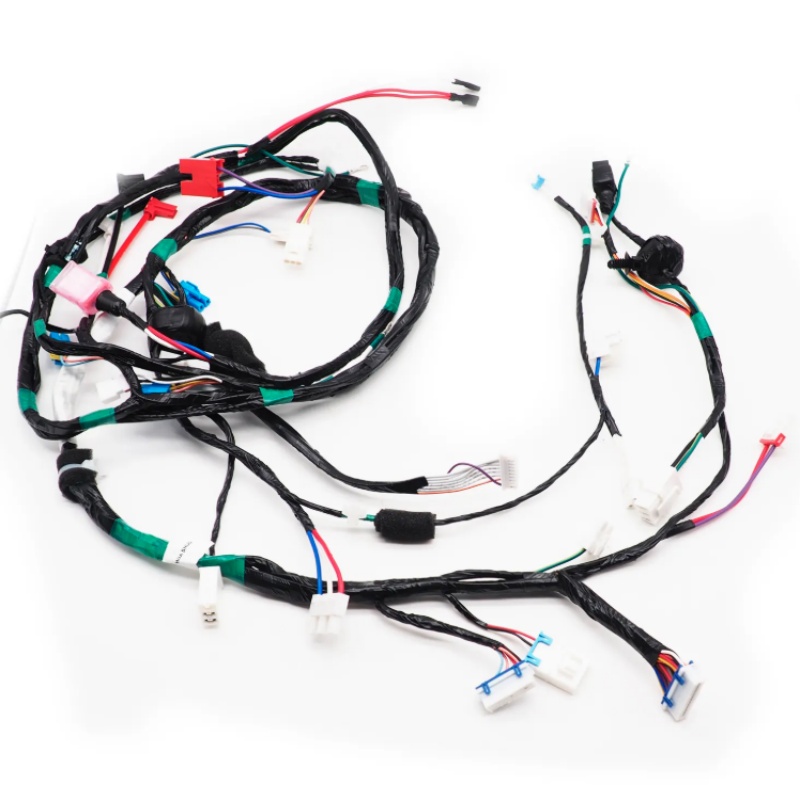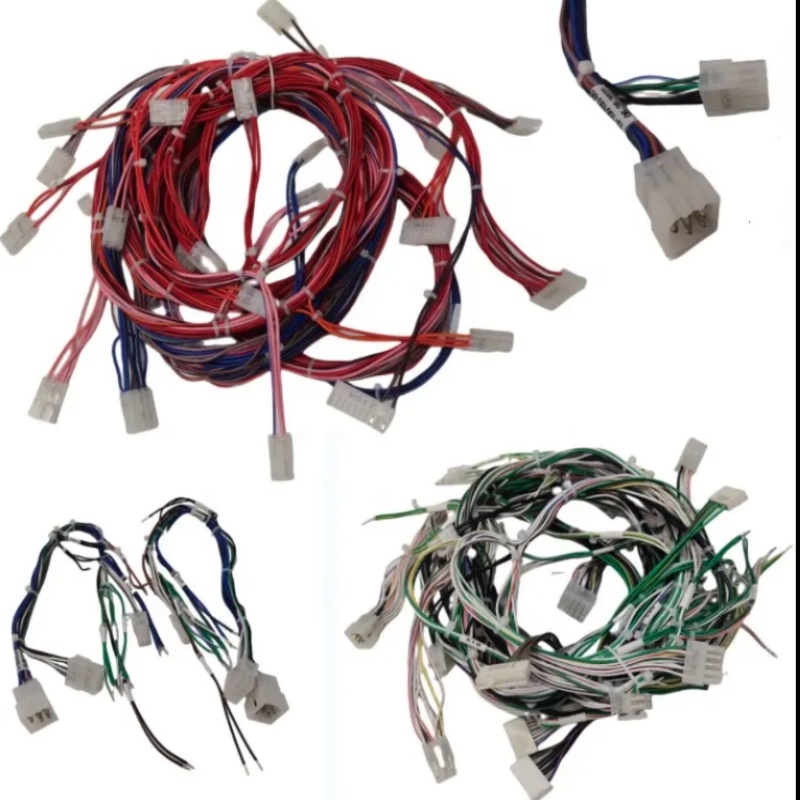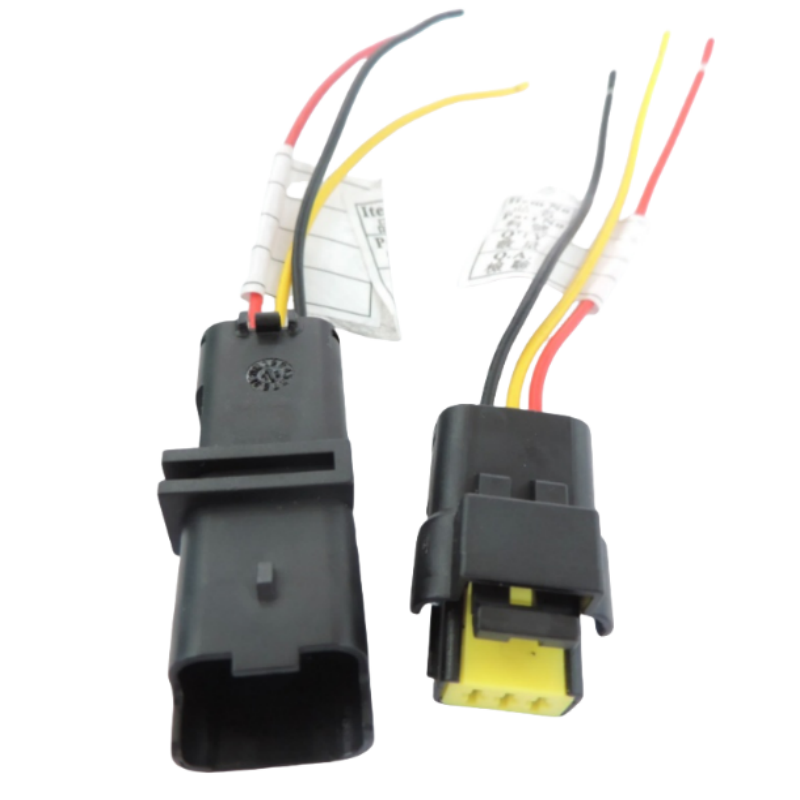Customized Cable & Connector
Customziable Engine Wiring Harness
- Product description: Customziable Engine Wiring Harness
An Engine Wiring Harness is a critical component in the electrical system of an internal combustion engine (or hybrid/electric vehicle). It consists of a bundle of wires, connectors, and electrical components designed to distribute power and signals to various parts of the engine and related systems. The wiring harness ensures that the engine can communicate with other vehicle systems (like the fuel system, ignition system, sensors, ECUs, and actuators) in an efficient and reliable manner.
Key Functions of an Engine Wiring Harness:
1. Power Distribution:
o The engine wiring harness carries electric power from the battery and alternator to various engine components like the starter motor, fuel injectors, ignition coils, and other actuators that require power to operate.
2. Signal Transmission:
o It transmits electrical signals between the engine control unit (ECU) and various sensors (e.g., oxygen sensors, temperature sensors, crankshaft position sensor, throttle position sensor). These sensors send data to the ECU, which interprets the information and adjusts engine parameters like fuel injection, timing, and emissions control.
3. Engine Component Control:
o The wiring harness connects and allows communication between components such as the ignition system, fuel injectors, alternator, starter motor, and other actuators that are vital to the engine’s operation.
4. Safety and Protection:
o In modern vehicles, the engine wiring harness is also equipped with safety features like fuses and relays that protect the engine's electrical components from overcurrent, short circuits, and other electrical faults.
Components of an Engine Wiring Harness:
1. Wires:
o The wires inside the engine wiring harness are typically made of copper (for conductivity) and are insulated to prevent shorts and corrosion. These wires are bundled together, often with heat-resistant materials, to withstand the high temperatures that are common in the engine compartment.
2. Connectors:
o The harness includes various connectors at each end, allowing it to plug into components like the ECU, fuel injectors, sensors, and actuators. These connectors are designed to be secure and resist the harsh conditions found in the engine bay, such as heat, vibration, and moisture.
3. Relays and Fuses:
o Relays control the electrical current to components, allowing higher current devices to be controlled by lower current signals. Fuses protect sensitive components from electrical overload by breaking the circuit in case of a short or overcurrent.
4. Grounding Wires:
o The harness also includes ground wires that ensure the safe return of electrical current to the battery or vehicle chassis, completing the circuit for the engine's electrical system.
5. Heat-Resistant Sleeving or Insulation:
o Given the high temperatures in an engine compartment, the wires in the engine harness are often wrapped in heat-resistant sleeves or insulation to prevent damage from the engine's heat.
Applications of an Engine Wiring Harness:
1. Internal Combustion Engine (ICE) Vehicles:
o The engine wiring harness is essential for traditional gasoline and diesel engines. It ensures communication between the engine's sensors, ECU, and actuators to manage fuel delivery, ignition timing, exhaust emissions, and overall engine performance.
2. Hybrid and Electric Vehicles (EVs):
o In hybrid vehicles and electric vehicles, the engine wiring harness also integrates with systems that manage the electric motor, battery pack, and power control units. In these vehicles, the harness ensures communication between the electric motor, inverter, regenerative braking system, and other components.
3. Aftermarket and Custom Engine Builds:
o For performance cars, race cars, or custom-built engines, aftermarket engine wiring harnesses are often used to tailor the electrical system to specific needs, such as aftermarket ECUs, performance sensors, or specialized sensors for tuning purposes.
4. Marine and Off-Road Vehicles:
o In marine engines or off-road vehicles, engine wiring harnesses are also crucial to maintain engine performance under challenging environmental conditions like water, mud, and extreme temperatures.
Advantages of an Engine Wiring Harness:
1. Organized and Efficient Wiring:
o An engine wiring harness keeps the complex network of electrical wires organized, ensuring that wires don't become tangled or exposed to physical damage from engine vibrations or heat. This also makes repairs or replacements easier.
2. Protection from Environmental Factors:
o Wiring harnesses are designed to resist heat, moisture, corrosion, and vibration, all of which are common in an engine compartment. This ensures that the engine's electrical components remain functional for the lifetime of the vehicle.
3. Improved Reliability:
o A properly designed engine wiring harness enhances the reliability of the vehicle by reducing the likelihood of electrical issues, such as short circuits, which can lead to engine performance problems or component failure.
4. Safety:
o The inclusion of fuses, relays, and ground wires ensures that electrical problems, such as overcurrent or short circuits, are safely handled, minimizing the risk of fires or damage to the engine's electronic systems.
Conclusion:
The engine wiring harness is an essential component that provides both power and signal connections for the engine's electrical systems. It ensures that the engine’s various components (like the ECU, fuel injectors, ignition system, sensors, and actuators) can communicate effectively and operate smoothly. By organizing and protecting the electrical wiring, the engine wiring harness helps improve the reliability, safety, and performance of the vehicle’s engine, especially in demanding environments like high temperatures and vibrations. Whether in traditional internal combustion engines, hybrid systems, or electric vehicles, the engine wiring harness plays a crucial role in modern automotive and industrial systems.
Categories
Latest News
Contact Us
Contact: Fiona Wu
Phone: 86 - 173 28414 818
Tel:
Add: 20, Changtian Road, Hengli, Dongguan, Guangdong, 523852, China




 Lankecms
Lankecms lankecms
lankecms
 Lankecms
Lankecms